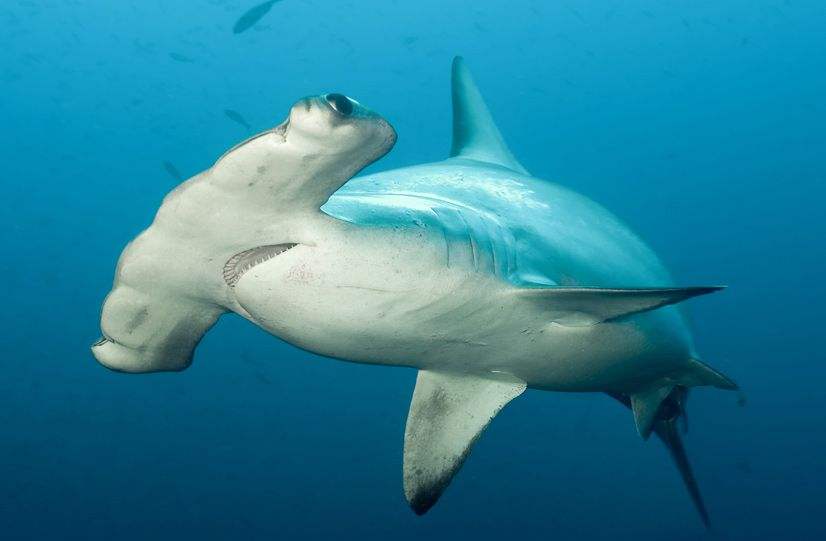The eyes and nostrils of the scalloped hammerhead shark are located on the left and right sides of the head. Unlike other hammerhead sharks, the front end of the hammerhead-shaped head of the scalloped hammerhead shark has three obvious round tooth-like indentations. Its peculiar head shape may increase its buoyancy in the water, and it may be more flexible in turning than other sharks. The head of the scalloped hammerhead shark has many small holes, which are used to "catch" biological signals emitted by other animals, and are called "Laurence ampulla".

Hammerhead sharks often have cleaner fish clean parasites from their skin and mouths. In fact, this is a symbiotic relationship. Scalloped hammerhead sharks are strongly migratory fish. Every time the season changes, large groups of hammerhead sharks will form a huge migration team and make a long journey. Due to the continuous deterioration of the marine environment and pollution, the number of this fish species has dropped significantly, and the five major subgroups have all shown varying degrees of shrinkage and reduction.
Studies have shown that its population in the Atlantic Ocean has dropped by nearly 95%. The scalloped hammerhead shark is a common bycatch of fisheries. Its shark fins are called "spring fins" in the market and are very popular. The meat of the scalloped hammerhead shark is also widely used for food. Currently, the population of the scalloped hammerhead shark is under serious threat from overfishing and habitat destruction.
Listed in the 2007 Red List of Endangered Species of the World Conservation Union (IUCN) ver 3.1 - Endangered (EN).
Listed in the Appendix II of the Washington Convention on International Trade in Endangered Species (CITES) as a protected animal.
Listed in Appendix I, II and III of the Convention on International Trade in Endangered Species of Wild Fauna and Flora (CITES) 2019 Edition Appendix II.
Protect wild animals and eliminate game.
Maintaining ecological balance is everyone's responsibility!